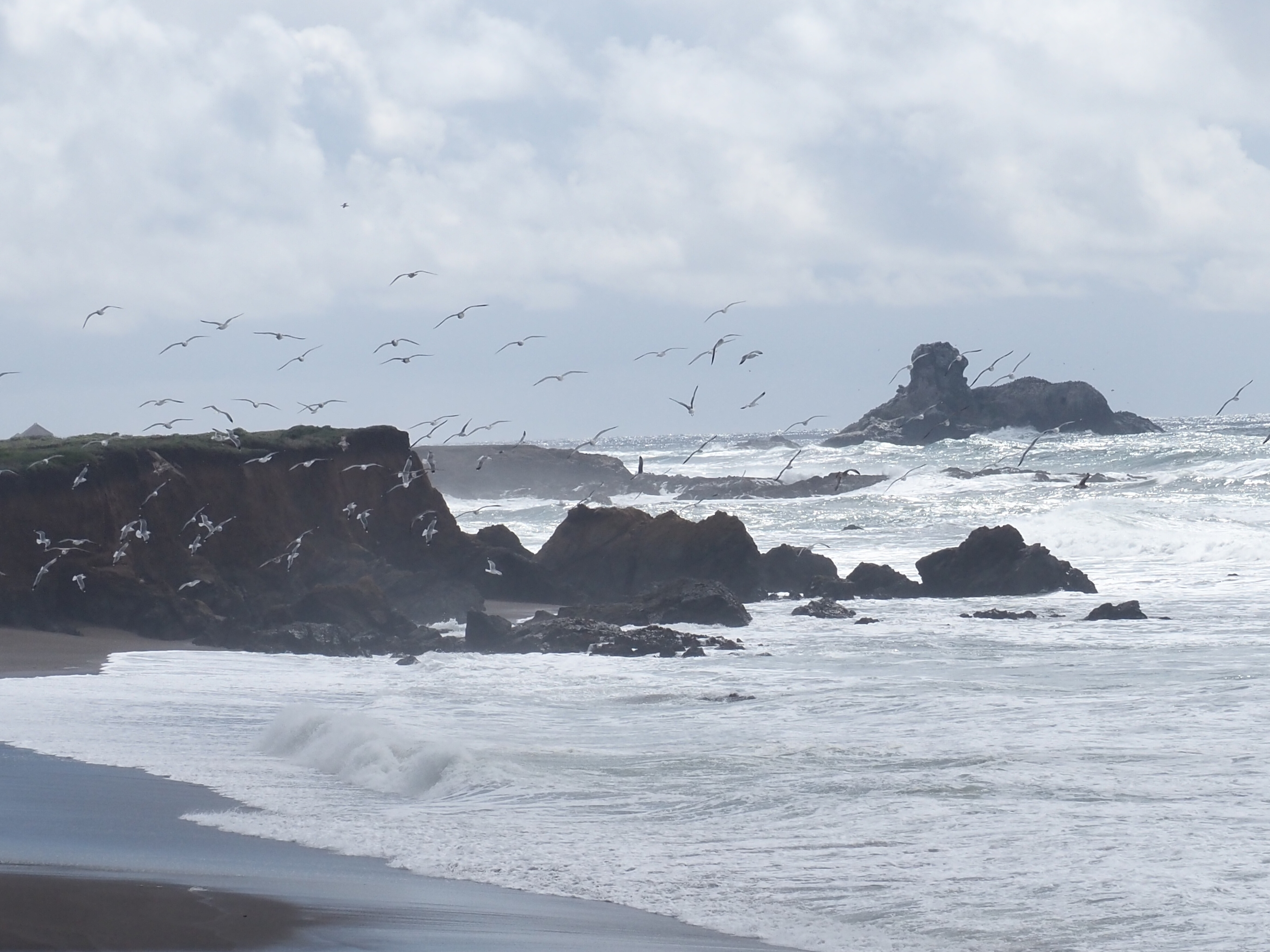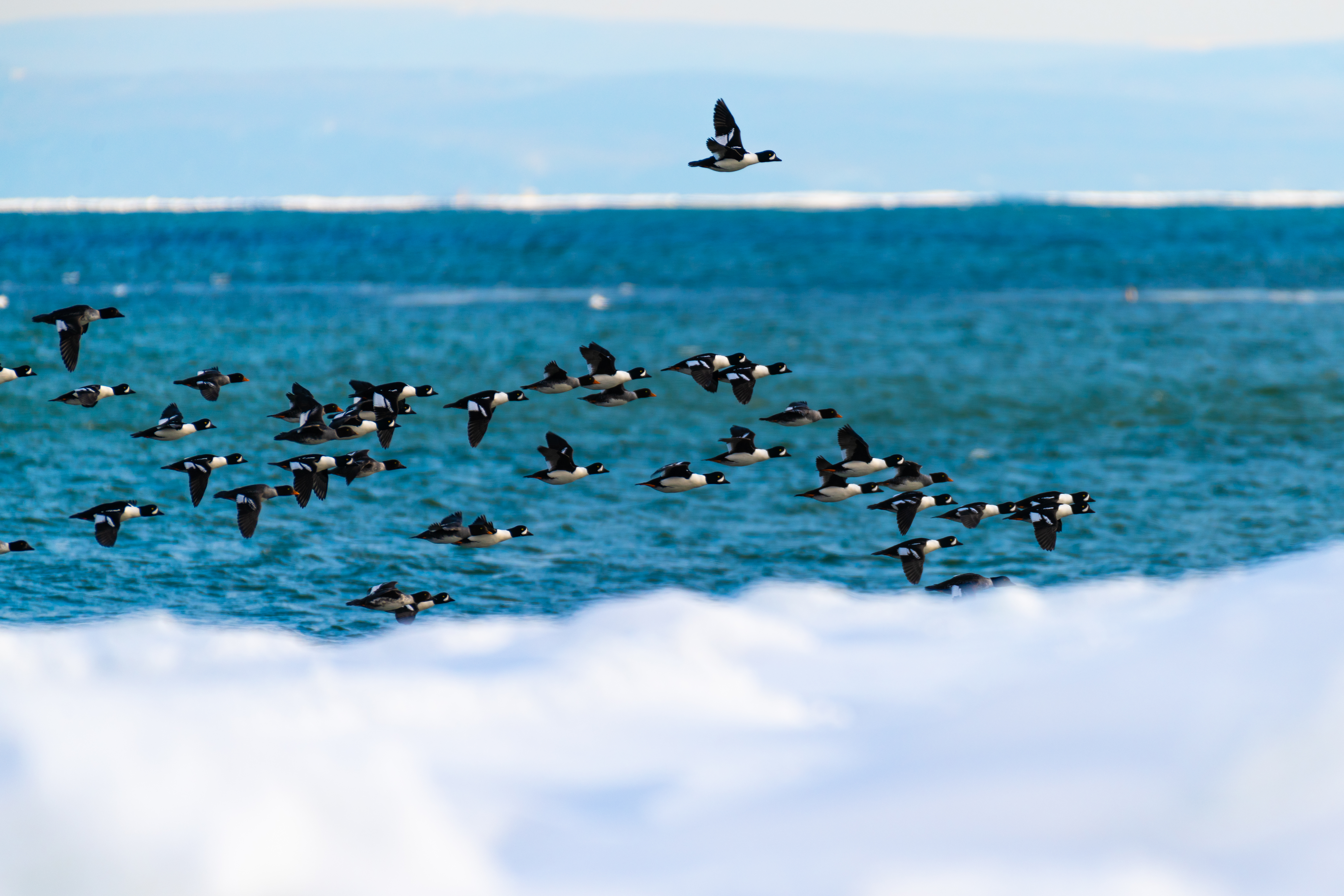Sunday, September 13: as usual, I had to deal with the tide when putting my boat into the water and wound up not leaving Le Bic until the afternoon. With seas as calm as they were that day, it took me less than an hour to reach Baie de Mille-Vaches off of Longue-Rive, a distance of about twenty nautical miles. I was welcomed by a large, beautiful spout. I was relieved to discover that there was a blue whale in the sector. There have been very few of them in the Estuary since the beginning of the season. I made three or four trips earlier, covering a lot of ground, but without much success. It was B119, nicknamed “Slash” by the Mingan Island Cetacean Study (MICS), and easily recognized by the large white scars on its right flank. As I was trying to photograph the animal, I saw other large blows in the distance. I counted up to eight different spouts of blue whales during my outing. These whales seem to be back in large numbers in the Estuary. Unfortunately, I was unable to photo-ID over half of these blue whales due to a lack of time and light, and due to their feeding behaviour. Indeed, the sky was clouding up and the light was growing dimmer, krill were surfacing again and it was easy to observe these dense food masses on the echo sounder in the water column near the surface.

When blue whales feed just below the water surface, they do not emerge often or sufficiently out of the water to allow us to obtain a good photo. Indeed, they swim slowly on their side, often even lifting a pectoral fin and a portion of their tail out of the water, then roll over for a breath or two but without sufficiently showing their entire back and dorsal fin. They don’t necessarily need to swim fast or arch their back as they do when they perform deep dives, much less to raise their tail. Then they start the dance all over again, which does not seem to require a great deal of energy or breathing. They move very slowly, often in a large circle. Even if they don’t show any part of their body and remain out of sight, they can be followed simply by the water movement they produce at the surface.
At one point, I was surrounded by four blue whales who were all showing the same behaviour, namely lifting their backs out of the water while remaining in one spot. It was like a mountain rising out of the water. They gravitated around me, so close to the boat – almost too close – that I didn’t even have to move. It was impressive! The usual “flukers”, or individuals who typically show their tails, dragged their tails on the surface rather than lifting them completely. This behaviour – raising the tail when diving – seems pointless when their food is shallow and easily accessible.

Usually, to take good ID photos of a blue whale, we wait for it to emerge out of the water and, travelling at the same speed, we position ourselves facing its flank in order to photograph it at a right angle. By timing the animal’s previous sequence and predicting its dive time, its direction of travel and the number of breaths it will take, we normally manage the best photo at the last breath, as it prepares to dive and its back is most exposed. That is why this surface feeding behaviour, though it may be spectacular, is far from ideal for photo-identification.
During this brief outing I managed a few mediocre pictures of half of the individuals. The results are somewhat frustrating, but I feel so rewarded to have observed the impressive behaviour of these calm giants. Hopefully they stick around for a while for the benefit of other observers.
Photos: © René Roy
 René Roy is an amateur cetologist who is passionate about the sea and whales; he resides in Pointe-au-Père, in the Bas-Saint-Laurent region. For the past few years, he has undertaken photo-identification expeditions for the Mingan Island Cetacean Study (MICS), mainly in the Gaspé. He also volunteers for the Quebec Marine Mammal Emergency Response Network.
René Roy is an amateur cetologist who is passionate about the sea and whales; he resides in Pointe-au-Père, in the Bas-Saint-Laurent region. For the past few years, he has undertaken photo-identification expeditions for the Mingan Island Cetacean Study (MICS), mainly in the Gaspé. He also volunteers for the Quebec Marine Mammal Emergency Response Network.





